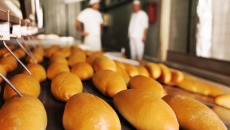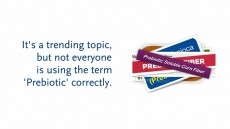Special edition: Free-from foods
Sorting through the gluten-free toolbox

An estimated 1% of the US population suffers from celiac disease, an auto-immune disorder in which the sufferers cannot properly digest gluten, the protein found primarily in wheat.
But the gluten-free wave is cresting far high than that, as numerous consumers have started to choose gluten free products because they apparently believe them to be healthier. And celebrities are on the bandwagon, too; singer Miley Cyrus credited her recent weight loss to a gluten-free diet.
“I think there is definitely a perception in the market that people do identify gluten free as being a more nutritional product,” Patrick O’Brien, marketing manager of bakery at Ingredion told FoodNavigator-USA.com
“The way we see it there are really four categories of consumers going after gluten free.
"There are those suffering from celiac disease. And then you see the people who may be sensitive to gluten. That third group is going to gluten free because of perceived health benefits and then I think a fourth group is taking it because they are jumping on a bigger overall trend. It’s in the news,” O’Brien said.
“Those groups combined make up a pretty sizable market for gluten free. I guess there is risk that segments of those groups might choose a different trend down the road, but you will always have the celiacs and people who are sensitive so I think the gluten-free market is sustainable and that sense,” he said.
Waiting for a cure
Early gluten-free baked goods suffered from taste and texture issues like being soggy or overly dry, grittiness and poor crumb structure. Indeed, one comedian’s joke at the time was, “Why do you find gluten-free products in the freezer section? Because they’re waiting for a cure.”
Gluten is a multifunctional ingredient. It forms a stretchy matrix when kneaded, imparting structure to yeast breads, and it adds protein content and a recognizable taste. In a similar fashion to finding ways to replace sugar and salt in products, formulators have found that replacing gluten requires a toolbox full of ingredient solutions.
One approach is to use a flour milled from a gluten-free grain, like buckwheat or oats. But these flours alone can’t do all that a gluten-containing flour can.
“We have not seen a one-to-one replacement for wheat in bakery products, so a combination of ingredients is usually needed to simulate the performance of wheat,” said Chris Thomas, a senior food technologist at Ingredion.
“Other gluten-free grains besides corn, buckwheat and quinoa include rice, amaranth, sorghum, millet, oats (if free from cross-contamination). A disadvantage is that these grains alone cannot replace the functionality of wheat, so a combination of grains, starches (tapioca, potato, etc.), other protein sources and/or gums are usually needed,” he said.
Taste has been a hurdle, too. Early gluten-free preparations relied heavily on rice flour, and many consumers didn’t find the taste an acceptable substitute for wheat.
“Flavor is impacted when replacing wheat, especially in recipes where flour is a primary component, like bread. Texture is impacted significantly when replacing gluten and has been a prevailing reason for dissatisfaction of gluten-free bakery products. However, Ingredion and other ingredient companies are working to bridge the gap in texture between gluten-free and gluten-containing bakery products,” Thomas said.
Modified starches
One of the solutions Ingredion offers came out of the Corn Products International stable (the company was renamed Ingredion after the Corn Products and National Starch merger). Called Expandex, the product is a modified tapioca starch used as a texturizer in gluten free applications. Tapioca is a one the main ingredients found in the gluten free toolbox.
Another tool are specialty flours, milled in such a way to replace some of gluten’s functionality. Ingredion, for example, offers HomeCraft Creat G10 and GF20 flours that the company says replace some of gluten’s springiness. And the flours have hydroscopic properties, too, keeping baked goods moist.
Another way to manage moisture in gluten-free formulations is with the application of various hydrocolloids, ingredients that can come from plant exudates, plant and seaweed extracts, seed gums and cellulose.
More expertise from a growing number of companies in the market has created a rising tide that is lifting all gluten-free boats, O’Brien said.
“Consumers are demanding better products, and you see more and more players entering the market. There are some really good products on the market today that are gluten free and pretty much indistinguishable from gluten products,” he said.



















